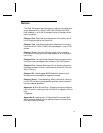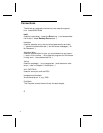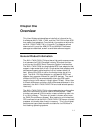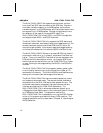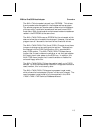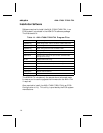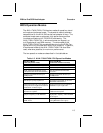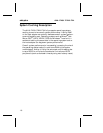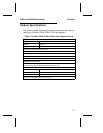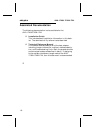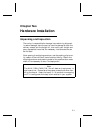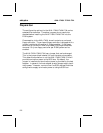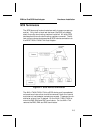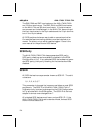
BIOS Operation Modes
The AHA-1740A/1742A/1744 has two modes of operation: stand-
ard mode and enhanced mode. The standard mode is software
compatible with the AHA-1540 series host adapter drivers. The
enhanced mode uses an advanced, high performance mailbox
interface and features full EISA 32-bit addressing. The
AHA-1740A/1742A/1744, in enhanced mode, can support up
to 4 Gigabytes of host RAM memory. The two modes of the
AHA-1740A/1742A/1744 are selected by running the EISA Con-
figuration utility provided with every EISA machine. In general,
the enhanced mode of the AHA-1740A/1742A/1744 should be
used, whenever possible, for maximum performance.
The two operation modes are described in the table below.
Standard Mode
(ISA compatible mode)
Enhanced Mode
(enhanced mailbox interface)
32-bit host transfers at 33 MBytes/sec. 32-bit host transfers at 33 MBytes/sec.
Addresses up to 16 MBytes host RAM. Addresses up to 4 Gigabytes host RAM.
AHA-1540 series mailbox structure
(compatible with AHA-1540 software).
New high performance mailbox
structure.
Supports Fast SCSI devices up to
5 MBytes/sec.
Supports Fast SCSI devices up to
10 MBytes/sec.
Boot only from SCSI ID 0. Boot from any SCSI ID.
Drives spin up only at power-on. Drives spin up at power-on, or from
SCSI Start Unit command.
Disconnect/reconnect, parity checking,
and synchronous negotiation enable or
disabled for all SCSI targets.
These parameters can be enabled or
disabled on a per target basis.
Up to four host adapters can be in-
stalled in the system.
Up to twelve host adapters can be
installed in the system.
BIOS support for drives up to 1 Gi-
gabyte in capacity under MS-DOS.
BIOS support for drives up to 8
Gigabytes in capacity under MS-DOS
5.0 or higher.
BIOS support for a maximum of 2
SCSI drives.
BIOS support for up to 7 SCSI drives
(using MS-DOS 5.0 or higher).
Table 1-2. AHA 1740A/1742A/1744 Operation Modes
EISA-to-Fast SCSI Host Adapter Overview
1-5



